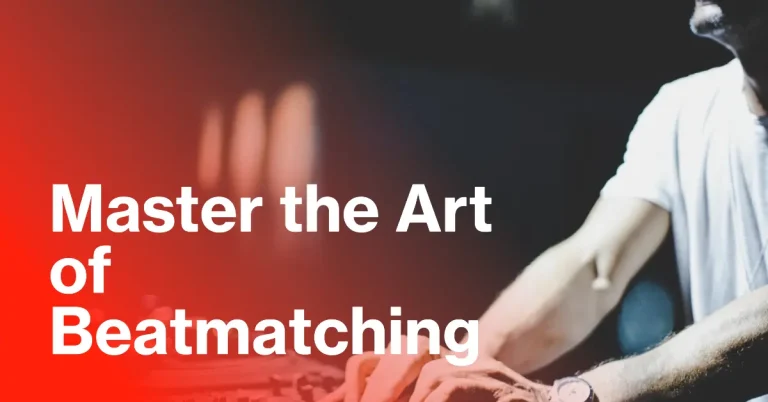What is Crossfader? ( How to use it)
The crossfader is an essential tool for DJs as it allows them to seamlessly transition between two audio sources. It’s typically found on DJ mixers and controllers. The crossfader works by adjusting the volume levels of two audio channels. DJs can assign different tracks or audio sources to each channel and use the crossfader to control the balance between them. By moving the crossfader from one side to the other. DJs can smoothly fade in and fade out the audio from one track. While simultaneously bringing in the audio from the other track.
This blending technique is particularly useful during DJ sets when DJs want to create smooth and seamless transitions between songs. They can gradually fade out the current track while bringing in the next track, creating a continuous flow of music without any abrupt stops or starts. It also allows DJs to perform various mixing techniques such as cutting and scratching. By quickly moving the crossfader back and forth. DJs can create rhythmic patterns and add their own unique flavour to the mix. We damn sure when you read this article you know “what is crossfader”.
Difference Between Mixing with Crossfader or Volume Fader

Mixing with the crossfader and the volume fader are essential techniques in DJing. Let’s dive into each one in more detail.
The crossfader is primarily used for transitioning between two songs seamlessly. DJs adjust the position of the crossfader to fade out one track while simultaneously fading in another. This technique allows for a smooth blend of music, ensuring a continuous flow and keeping the energy of the set going strong. It’s particularly useful when DJs want to create a seamless transition between songs, maintaining the groove and vibe on the dance floor.
On the other hand, the volume fader is used to control the overall volume of a track. DJs can gradually increase or decrease the volume using the volume fader, allowing for dynamic changes in the mix. This technique is helpful when DJs want to bring in additional elements like effects, samples, or even vocals. By manipulating the volume fader, DJs can introduce these elements gradually, adding layers to the mix and enhancing the overall sound.
In practice, DJs often utilise a combination of both the crossfader and the volume fader to achieve their desired mixing style. They may use this thing to smoothly transition between songs, while simultaneously adjusting the volume fader to control the overall volume and bring in additional elements. This combination allows for creative mixing techniques, maintaining a seamless flow while adding depth and excitement to the mix.
Ultimately, the choice between the crossfader and the volume fader depends on the specific moment in the mix and the desired effect. DJs develop their own unique style and techniques over time, mastering the art of using both faders to create memorable DJ sets.
Crossfader DJ Work
This thing is a key component of DJ equipment that allows DJs to smoothly transition between two songs. It works by controlling the volume levels of two audio sources, typically two different tracks. The crossfader is positioned in the middle, dividing the audio sources into two sides. When the crossfader is in the middle position, both audio sources are at an equal volume And the sound from both tracks is heard simultaneously. As the DJ moves the crossfader to one side, it gradually decreases the volume of one track while increasing the volume of the other track. This creates a seamless transition, with one track fading out while the other fades in.
The crossfader is design with a smooth and precise mechanism, allowing DJs to have precise control over the volume balance between the two tracks. DJs can adjust the speed at which they move the thing, allowing for quick cuts or gradual transitions based on the desired effect. Some crossfaders also have a curve adjustment feature. This allows DJs to customise the way the volume changes as they move the crossfader. They can choose a sharp curve for quick and precise cuts or a smoother curve for more gradual transitions.
The crossfader is an essential tool for DJs, enabling them to seamlessly blend tracks and create smooth transitions during their sets. It adds a level of creativity and control to their performances, enhancing the overall experience for both the DJ and the audience.
Crossfader Located
Sure, We can provide more details about the location of the crossfader. The DJ mixer crossfader is typically positioned in the centre between the two channels. It is designed as a horizontal slider that moves from left to right or vice versa. This placement allows DJs to access the crossfader easily with their hand while performing. By having the crossfader centrally located, DJs can make quick and precise adjustments to the volume levels of the audio sources. This means they can seamlessly transition between two tracks, gradually fading out one while fading in the other.
The central location of the of this thing is on the mixer is also advantageous. Because it allows DJs to simultaneously manipulate other features of the mixer. For example, they can adjust the EQ knobs or apply effects while controlling the crossfader. This accessibility enables DJs to have full control over their mix and create unique and dynamic performances. The location of this thing is in the centre of the DJ mixer. Ensures that it is easily accessible and allows DJs to smoothly transition between tracks while having control over other mixer features.
Best Crossfader Time

When it comes to determining the best crossfader time. It really boils down to personal preference and the specific context of your DJ sets. There isn’t a one-size-fits-all answer, as different DJs have different styles and preferences when it comes to mixing. Some DJs prefer a shorter crossfader time which allows for quick and precise cuts between tracks. This can be particularly useful in genres like hip-hop or scratch-heavy styles, where precise timing and quick transitions are important. With a shorter crossfader time, you can execute sharp cuts and create dynamic effects that add flair to your mixes.
On the other hand, some DJs prefer a longer crossfader time. Which allows for smoother and more gradual transitions between tracks. This can be beneficial in genres like house or techno, where seamless blending and gradual changes in energy are desire. With a longer time, you can create smooth transitions that maintain the flow and energy of your set.
Finding the best crossfader time for you involves experimentation and practice. It’s about finding the balance that feels most comfortable and suits your mixing style. You may want to try different crossfader settings and see how they affect your mixes. Pay attention to how it impacts the overall flow, energy, and vibe of your sets. Trust your ears and go with what sounds and feels right to you.
Remember, there’s no right or wrong answer when it comes to crossfader time. It’s all about finding your own unique style and creating mixes that resonate with you and your audience. So, keep exploring, experimenting, and refining your skills as a DJ and you’ll discover the crossfader time that works best for you.
Conclusion
The crossfader is a fundamental component of DJ equipment, typically found on mixers and DJ controllers. It is a horizontal slider that controls the volume balance between two audio channels. When the crossfader is position all the way to one side. It allows the audio from one channel to be heard, while completely muting the other channel.
As the crossfader is moved towards the opposite side, it gradually fades out the first channel and fades in the second channel. This allows DJs to smoothly transition between tracks and create seamless mixes. The crossfader is a powerful tool for DJs to control the energy and flow of their sets, enabling them to blend different tracks, align beats, transition between genres and add creative effects. It is an essential element in DJing that helps create a dynamic and engaging experience for the audience. When you already know “what is crossfader” then go and start your work.
FAQs
In music is like a magical slider on DJ equipment that controls the volume balance between two audio channels. It’s like having the power to smoothly fade out one track while simultaneously fading in another. DJs use the crossfader to create seamless transitions between songs, keeping the energy and flow of their sets going strong. It’s an essential tool that allows DJs to mix and blend tracks together, ensuring a smooth and enjoyable experience for the audience.
The crossfader in music refers to a component found on DJ equipment that controls the volume balance between two audio channels. It allows DJs to smoothly transition between tracks by fading out one channel while fading in the other. Enabling DJs to create seamless mixes and maintain the flow and energy of their sets. It adds a level of creativity and control to DJ performances, allowing for smooth transitions, beatmatching, genre blending, and creative effects.







